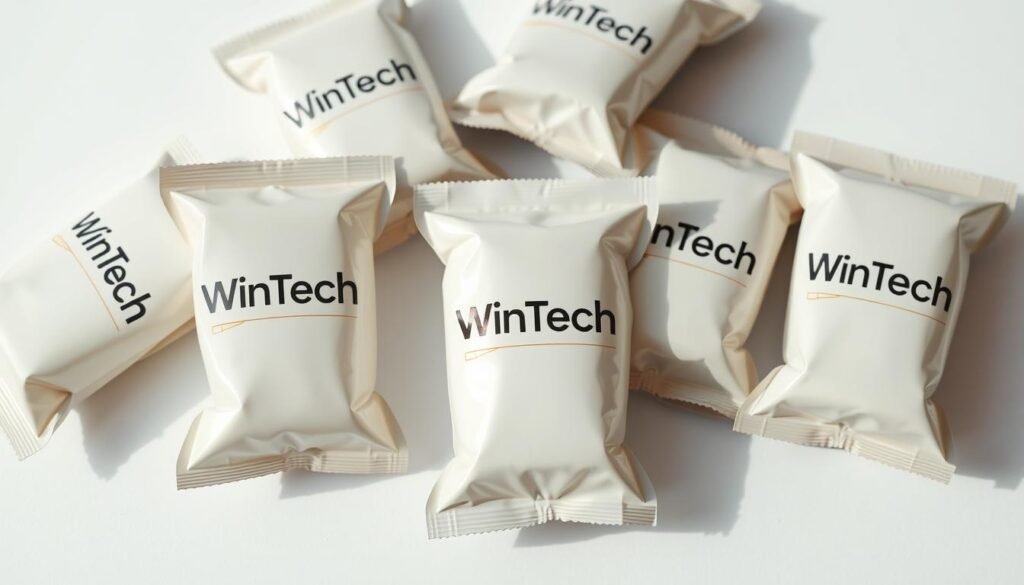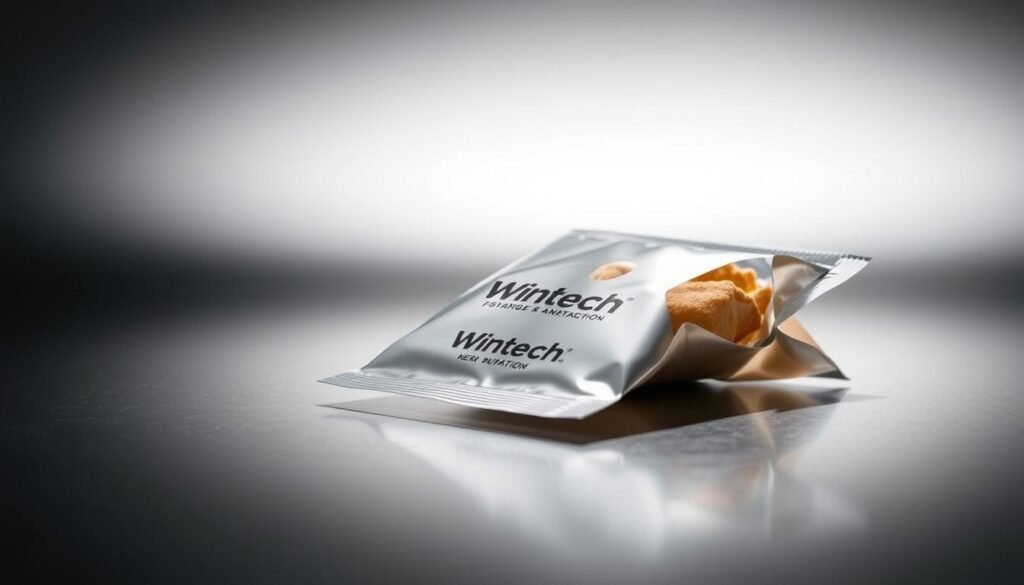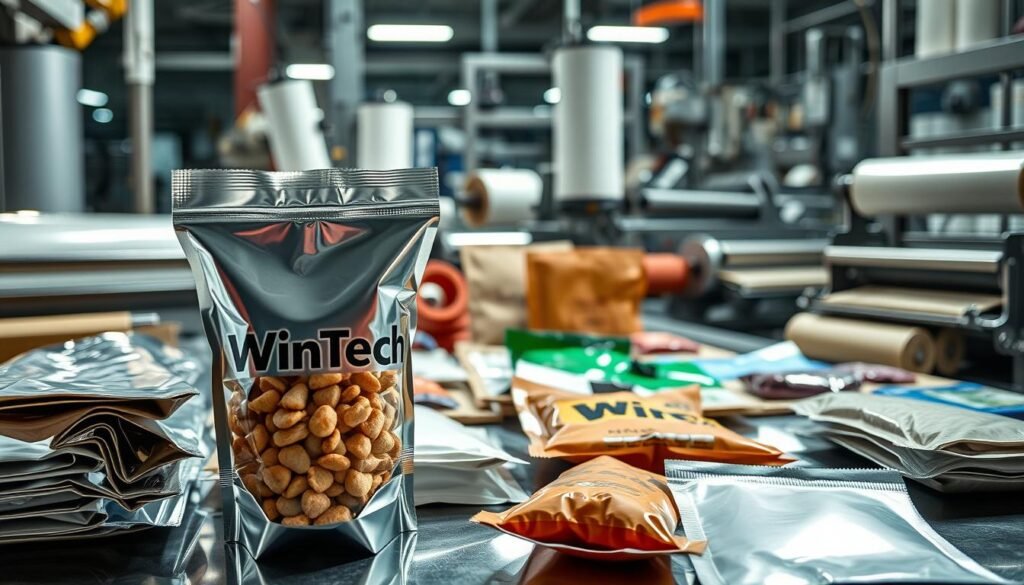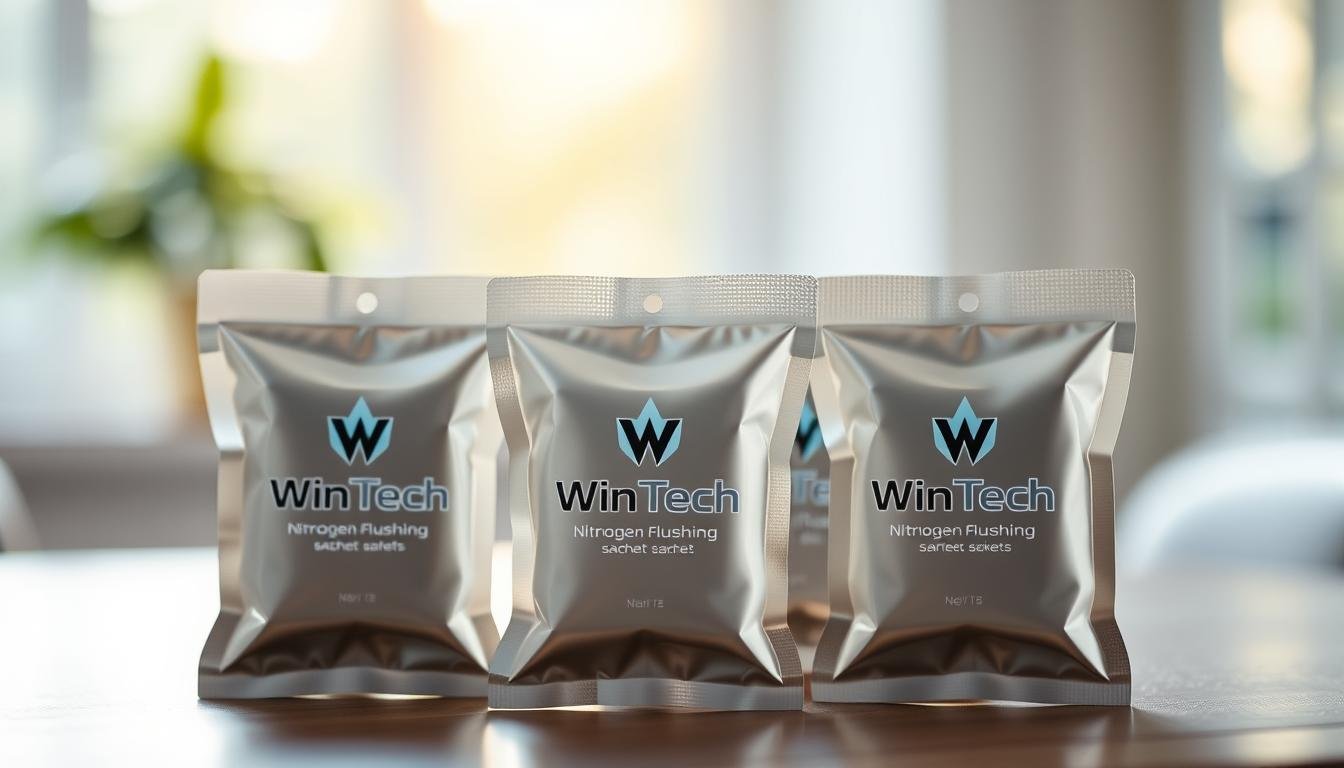Have you ever wondered how your favorite snacks stay fresh for months without preservatives? The secret lies in innovative packaging technologies like sachets for packaging that revolutionize food preservation.
What are sachets? These small, versatile packets are transforming the snack industry by creating a protective barrier against oxygen and moisture. Types of sachets range from moisture-absorbing to nitrogen-flushed packages, each designed to extend product shelf life dramatically.
Nitrogen flushing represents a cutting-edge solution in Modified Atmosphere Packaging (MAP) technology. By replacing oxygen with nitrogen, manufacturers can significantly slow down food degradation, keeping your snacks crisp and flavorful for longer periods.
Understanding what are sachets goes beyond simple packaging. They are sophisticated preservation tools that protect product quality, maintain taste, and reduce food waste through advanced scientific techniques.
Key Takeaways
- Sachets are specialized packaging solutions that extend food shelf life
- Nitrogen flushing prevents oxidation and maintains product freshness
- Modified Atmosphere Packaging reduces food spoilage
- Different types of sachets serve unique preservation purposes
- Advanced packaging technologies protect product quality
Understanding What Are Sachets in Packaging
Sachets have revolutionized the food packaging industry, offering innovative solutions for preserving product quality and extending shelf life. These small, lightweight packages are designed to protect contents from external elements, making them a critical component in modern food preservation strategies.

Sachets in the food industry represent a versatile packaging method that goes beyond traditional packet designs. They provide unique advantages for both manufacturers and consumers, particularly in the snack market.
The Role of Sachets in Food Preservation
Food preservation is a critical challenge for manufacturers, and sachets offer an effective solution. By creating a protective barrier, sachets help maintain product freshness through several key mechanisms:
- Blocking moisture and oxygen
- Preventing contamination
- Maintaining product integrity
- Extending shelf life
Benefits of Using Sachets for Snacks
When comparing sachets vs packets, snack producers find several compelling advantages:
- Portion control: Precise serving sizes
- Enhanced product protection
- Reduced packaging waste
- Improved product presentation
“Sachets represent the future of smart, efficient food packaging” – Food Packaging Innovation Magazine
Common Applications of Sachets
The versatility of sachets extends across multiple food sectors, including:
- Dry snacks
- Condiment packages
- Instant beverage mixes
- Nutritional supplements
Understanding what are sachets means recognizing their potential to transform food packaging with innovative, practical solutions that meet modern consumer demands.
What Are Sachets: The Science Behind Nitrogen Flushing
Single-use sachets represent a sophisticated packaging technology that goes beyond simple containment. Nitrogen flushing emerges as a critical preservation technique that transforms how snack products maintain their quality and freshness.

Understanding what are sachets involves exploring their advanced preservation methods. Nitrogen flushing is a scientific approach that creates an oxygen-free environment within packaging, protecting food products from degradation.
Principles of Nitrogen Displacement
The nitrogen flushing process works through several key mechanisms:
- Removes oxygen from packaging spaces
- Creates an inert protective atmosphere
- Prevents oxidative reactions
- Inhibits microbial growth
Advantages of Nitrogen in Preservation
Nitrogen offers unique benefits for single-use sachets, including:
- Extended shelf life for packaged products
- Reduced risk of spoilage
- Maintained product quality
- Minimized flavor degradation
Comparative Preservation Techniques
When comparing nitrogen flushing to alternative preservation methods, this technique stands out for its effectiveness in maintaining product integrity. Traditional methods often fall short in providing the comprehensive protection that nitrogen flushing delivers to what are sachets in modern packaging.
What Are Sachets Made Of?
Understanding what are sachets involves diving into the world of packaging materials that protect and preserve your favorite products. Sachets are versatile containers designed to keep contents fresh and protected from external elements.

Manufacturers use various materials to create sachets, each with unique properties and applications. The choice of material directly impacts product shelf life and quality.
Primary Sachet Materials
- Paper sachets: Lightweight and biodegradable options for dry goods
- Plastic sachets: Durable and moisture-resistant packaging
- Aluminum foil sachets: Excellent barrier against oxygen and moisture
- Biodegradable sachets: Eco-friendly alternatives gaining popularity
Material Selection Criteria
When selecting sachet materials, manufacturers consider several critical factors:
- Product compatibility
- Moisture resistance
- Oxygen barrier properties
- Environmental impact
Innovations in Sachet Materials
The packaging industry continues to evolve, with biodegradable sachets emerging as a sustainable solution. These innovative materials offer reduced environmental footprint while maintaining product integrity.
Modern sachet technologies now incorporate advanced polymers and plant-based materials, providing enhanced protection and sustainability for consumers seeking eco-friendly packaging options.
Future Trends: What Are Sachets in the Snack Industry?
The landscape of sachets for packaging is rapidly transforming, driven by innovative technologies and changing consumer expectations. As you explore the future of snack packaging, you’ll discover that what are sachets today represents far more than simple product containment. Manufacturers are now focusing on creating intelligent packaging solutions that meet sophisticated market demands.
Consumer preferences are shifting towards more sustainable and convenient packaging options. Brands like Wintech Package are pioneering eco-friendly sachet designs that reduce environmental impact while maintaining product quality. You’ll notice an increasing trend toward materials that are recyclable, biodegradable, and designed to minimize waste in the snack industry.
Evolving Consumer Preferences
Modern consumers want packaging that is not just functional but also tells a story. Smart sachets now incorporate technologies that provide transparency about product origins, nutritional information, and sustainability credentials. Your demand for authentic, traceable packaging is reshaping how manufacturers approach sachet design and production.
Sustainability in Sachet Production
The future of sachets for packaging lies in green innovation. Companies are investing heavily in research to develop packaging materials from plant-based sources, reducing carbon footprints. These advancements mean you can expect sachets that are both environmentally responsible and highly effective in preserving product freshness.
The Growth of Custom Sachet Solutions
Customization is becoming a key differentiator in sachet manufacturing. Brands are now offering personalized packaging solutions that cater to specific product requirements, consumer preferences, and niche market needs. This trend indicates that what are sachets will continue to evolve as dynamic, adaptable packaging solutions in the snack industry.
